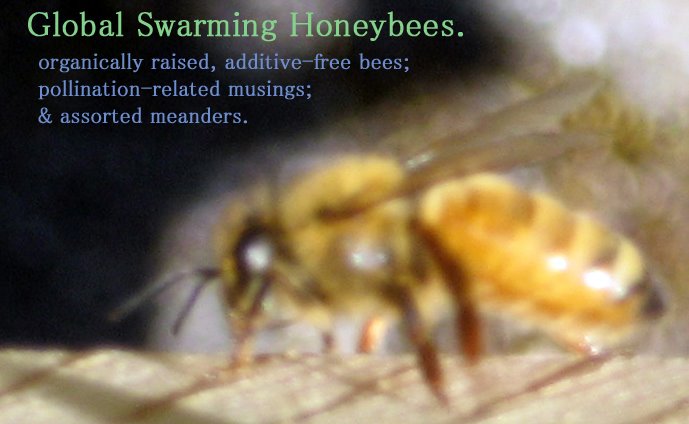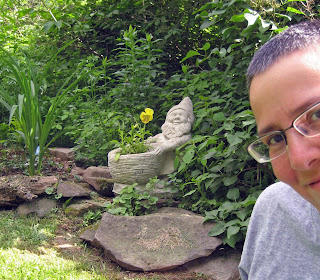“The magic of living life for me is, and always has been, the magic of living on the land, not in the magic of money.”—Burt Shavitz, co-founder of Burt's Bees
 I've always wanted to know the story behind Burt's Bees, whose lip balms have been close companions of mine over many a dry and windy season.
I've always wanted to know the story behind Burt's Bees, whose lip balms have been close companions of mine over many a dry and windy season. It's been impossible not to notice the company's meteoric expansion over the past couple of years; whereas once the product was found mainly in health food stores and food coops, it now seems that kiosks and endcaps featuring Burt's Bees products are springing up everywhere, from large grocery store chains like Hannafords and Whole Foods to fancy cosmetics vendors in midtown Manhattan.
It's been impossible not to notice the company's meteoric expansion over the past couple of years; whereas once the product was found mainly in health food stores and food coops, it now seems that kiosks and endcaps featuring Burt's Bees products are springing up everywhere, from large grocery store chains like Hannafords and Whole Foods to fancy cosmetics vendors in midtown Manhattan.  All this has made me wonder who that bearded man on the Burt's Bees package really is and what lies behind the exponential growth of this brand. (Which, by the way, delivers an excellent product.) I've also wondered about the beekeeping practices utilized at Burt's Bees, which emphasizes the idea of "all-natural" in its branding strategy.
All this has made me wonder who that bearded man on the Burt's Bees package really is and what lies behind the exponential growth of this brand. (Which, by the way, delivers an excellent product.) I've also wondered about the beekeeping practices utilized at Burt's Bees, which emphasizes the idea of "all-natural" in its branding strategy.Beekeeping practices are not the main subject of the fascinating New York Times article about Burt's Bees that appeared this weekend, but in the article you will learn:
* That all the beeswax used in Burt's Bees products comes from Ethiopia;
* Plenty of (semi-)juicy gossip about the company's co-founders;
* Details of the rather amazing saga of the company's recent purchase by Clorox for a whopping $913 million;
* That Burt Shavitz lives (by choice) in a modestly renovated turkey coop;
* The range of sustainable practices undertaken by Burt's Bees;
* and much, much more.
The article provides an intriguing glimpse into the odd bedfellows coming into being as large corporations seek to "shack up" with green businesses that offer impressive bottom lines and, potentially, a green-hued halo effect for even the most eco-hostile corporation. Only time will tell if Clorox will make good on its promise to embrace some of Burt's Bees earth-friendly practices, or whether this is just another instance of bleaching the green out of Green.








4 comments:
Is there not enough honey in the USA, or from our neighbors to the south? Seems awful far to transport honey.
It's actually the wax, not the honey, that's been imported—it's beeswax that forms the main ingredient for the lip balms and salves, though honey is probably used for scent in other products, like baby powder and soap. As for your question as to "why" I suspect it's the usual suspect: very cheap labor/low costs. I doubt it's a question of availability, but that's just my guess. Good question!
Just as Unilever destroyed Breyers and every other truly natural product it acquired. Clorox will ruin Burt's Bees.
This news is absolutely heartbreaking. Once again, the easy money is so much more important than commitment to the principles of caring for the environment and the best interests of the customers who have believed in their company for so many years.
"our actions will reflect our commitment to great natural personal care as well as bring to life our passion for people and the environment..." Yeah, right...
Smooth move, Roxanne Quimby... destroy the company as well as Burt's good name and genuine commitments. Go enjoy your money. I will never purchase any Clorox products as long as I live. Very sad news indeed.
Bye Bye Burt's Bees.
I am also very disturbed by how this all unfolded with Burt's Bees. Learning that they get all their beeswax half way around the world is NOT GREEN, and NOT LOCAL! I also read other articles which indicate Roxanne had every intention of selling the company in time. So if she is so environmentally minded, why did she participate in this leading to the sale to a very non-green company, for heaven sakes, and also allowing the company to use the primary ingredient from another exploited developing country?! Smooth move indeed, she got hers, at ~80 times the payment the real Burt received. I won't be buying their products however, I will NEVER trust clorox. I'll buy local instead.
Post a Comment